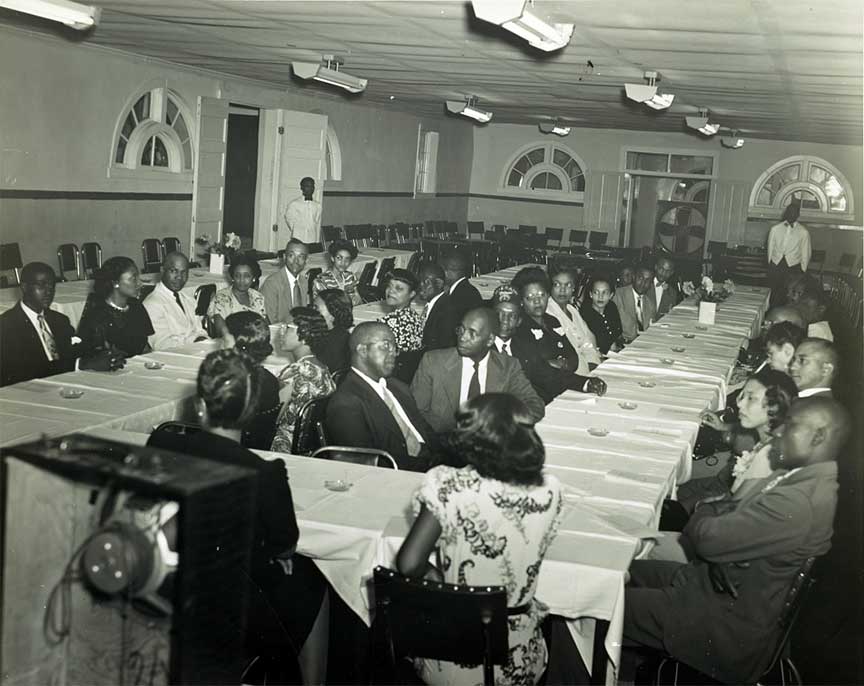1908 NAACP Founded

Montgomery, Alabama branch, NAACP meeting, about 1947
On February 12, 1908, the National Association for the Advancement of Colored People was formed in New York. The NAACP became the leading civil rights organization.
On February 12, 1908, a significant event in the history of civil rights in the United States took place: the formation of the National Association for the Advancement of Colored People (NAACP) in New York City. This organization would go on to become the leading civil rights entity, instrumental in fighting for the rights and equality of African Americans through the 20th century and beyond.
The inception of the NAACP was influenced by the dire social and political circumstances faced by African Americans in the early 1900s. The catalyst for the creation of the NAACP was the race riot in Springfield, Illinois, in 1908. This violent outbreak highlighted the urgent need for a national organization to advocate for the rights of African Americans. Following this, a group of progressive white and black activists, including W.E.B. Du Bois, Mary White Ovington, and Moorfield Storey, came together to form the NAACP. Their mission was to ensure the political, educational, social, and economic equality of minority group citizens and to eliminate race prejudice.
From its inception, the NAACP focused on addressing the pressing issues of lynching, segregation, and disenfranchisement that plagued African American communities. One of the first significant actions taken by the NAACP was to lobby for federal anti-lynching laws. During the early 20th century, lynching was a rampant practice used to terrorize African Americans, particularly in the South. Despite facing strong opposition from Southern legislators, the NAACP's efforts to bring national attention to this issue were crucial in the fight against this brutal form of racial violence.
The NAACP also played a pivotal role in challenging segregation laws, particularly those upheld by the 1896 Plessy v. Ferguson Supreme Court decision, which established the doctrine of "separate but equal." This doctrine justified the legal segregation of public facilities, including schools, transportation, and housing. The NAACP's Legal Defense and Educational Fund, established in 1939, spearheaded efforts to dismantle these laws. One of the organization's most significant victories came in 1954 with the Supreme Court's decision in Brown v. Board of Education, which declared state laws establishing separate public schools for black and white students to be unconstitutional. This landmark ruling was a critical step towards ending racial segregation in the United States.
The Civil Rights Movement of the 1950s and 1960s saw the NAACP at the forefront of numerous campaigns for racial equality. The organization was instrumental in organizing protests, boycotts, and legal challenges against discriminatory practices. One notable example is the 1955 Montgomery Bus Boycott, sparked by Rosa Parks' refusal to give up her seat to a white passenger. The NAACP provided legal and organizational support for the boycott, which lasted over a year and resulted in the desegregation of public buses in Montgomery, Alabama.
During the 1960s, the NAACP's influence was evident in the passage of landmark civil rights legislation. The Civil Rights Act of 1964 and the Voting Rights Act of 1965 were both significant achievements in the fight for equality. The former outlawed discrimination based on race, color, religion, sex, or national origin, while the latter aimed to eliminate barriers to voting for African Americans, particularly in the South. These legislative victories were the result of years of advocacy and activism by the NAACP and other civil rights organizations.
The NAACP also worked to address economic disparities faced by African Americans. The organization advocated for fair employment practices and equal access to economic opportunities. In 1967, the NAACP launched the Operation Breadbasket initiative, aimed at improving economic conditions for African Americans through job creation and business development.
As the NAACP entered the latter part of the 20th century and the early 21st century, it continued to address new challenges faced by African Americans. Issues such as police brutality, criminal justice reform, and economic inequality remained central to the organization's mission. The NAACP also adapted to the changing political and social landscape, using modern technology and social media to mobilize supporters and advocate for change.
In conclusion, the formation of the NAACP on February 12, 1908, marked the beginning of a powerful movement for civil rights in the United States. Through legal challenges, advocacy, and grassroots organizing, the NAACP has played a crucial role in advancing the rights and equality of African Americans. The organization's enduring legacy is a testament to its unwavering commitment to justice and equality for all.
 >
>